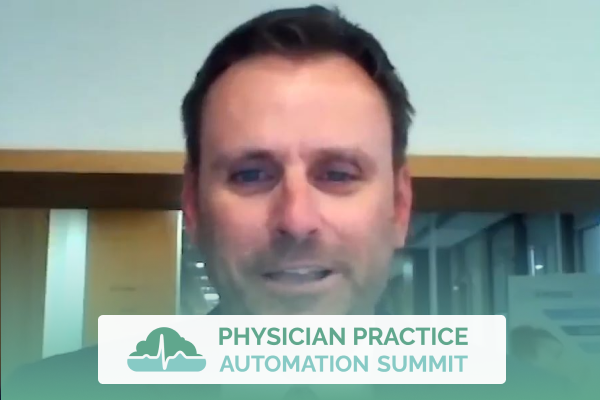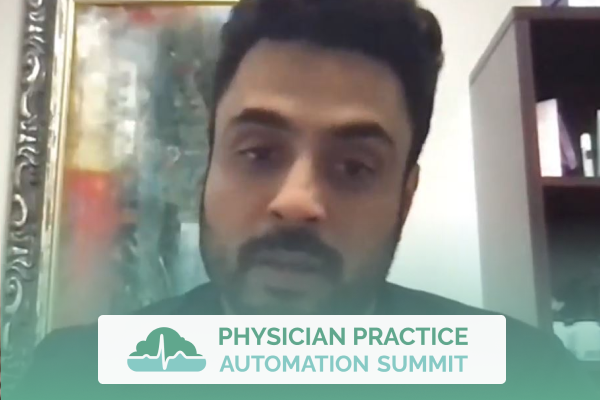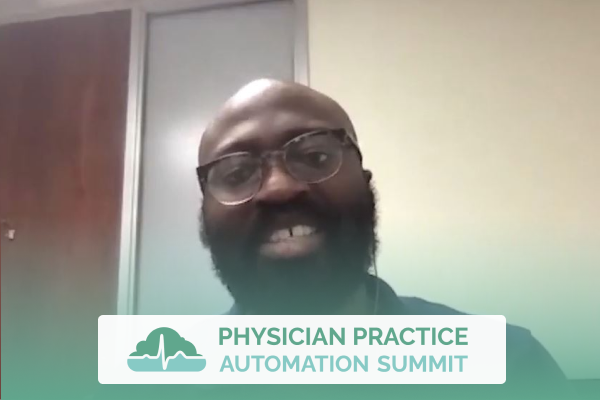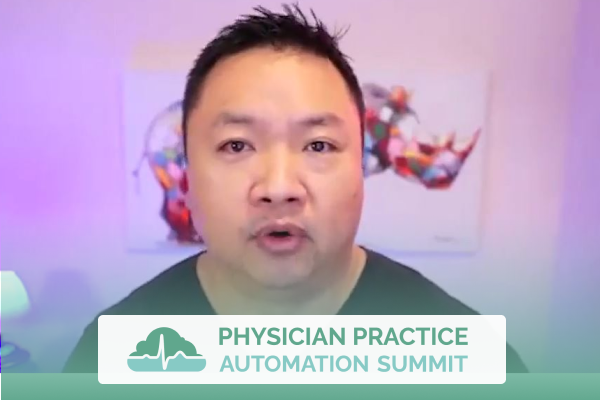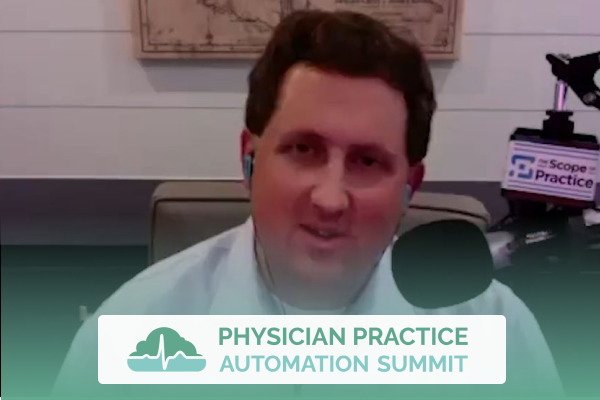Join the discussion below
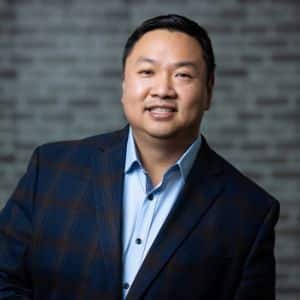
Dr. Ruan is the Founder and CEO of Texas Center for Lifestyle Medicine. He devotes his career in practicing and building systems that allow for efficient delivery of healthcare. He is a board certified internal medicine physician but also have advised with companies to improve their workflow, company culture, marketing,... Read More
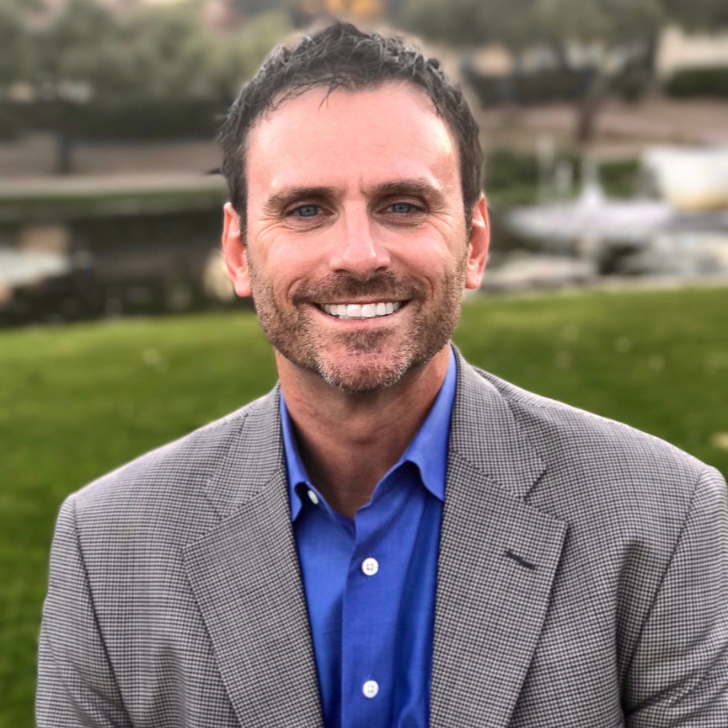
As EVP of Operations, Kenton’s responsibilities include leading the direction, strategy, policy, and day to day operations for VitalusHealth. Vitalus Health is one of the fastest-growing, innovative providers of sleep and pulmonary diagnostics, therapeutics, andcare management. Kenton has 25+ years of progressive leadership experience in hospitality and healthcare (DME, Supply... Read More
Cheng-Huai Ruan, M.D.
Hey, everybody. Really excited to introduce Kenton Schaff. Kenton is the Executive Vice President at a company called Vitalus Health, which has been working with us here at Texas Center for Lifestyle Medicine to deliver us sleep technology and home sleep studies and wakeful sleep tests within our clinic. Now, the reason I’m having him on that’s not necessarily because of the sleep technology, the reason I have Kenton on is because he during the pandemic was in charge of a large primary care institution. And when then he was in charge of sort of pivoting the technology from inpatient to telemedicine and pulling all sorts of strings. And what he learned that was actually a very invaluable lesson to teach all of us.
And then, now he’s in the technology world of delivering virtual technology on the technology side and what he learned from pivoting, from being in the weeds in the primary care clinic pivoting and into the technology pivoting space is very much something that we all have to learn and understand. And Kenton was also in charge of our revenue, revenue optimization as well as return investments with another company prior to that as well. So he understands supply chain, he understands the business model of practicing medicine, and now he’s understanding the tech side. And for him to bring all those three things together and teach us some of the lessons from that, I think it’s absolutely invaluable for the Physician Practice Automation Summit. Well, welcome. Welcome to the Summit.
Kenton Schaff, MBA
Thanks, Cheng. Really glad to be here tonight.
Cheng-Huai Ruan, M.D.
Man, you know I think that I’m more happy than you are because I get to ask you all sorts of questions that I think you can answer better than a lot of people. So I’m just gonna dive into it for a sec. You know you’ve been in population health space. You’ve been in primary care space. You’ve been in all sorts of different arenas. And now you’re in the tech arena with, you know, home sleep studies and stuff like that, right?
Kenton Schaff, MBA
Absolutely.
Cheng-Huai Ruan, M.D.
Out of everything that you’ve seen, what are some of the biggest pain points when it comes to a lot of clinician adopting technology or new upcoming technology?
Kenton Schaff, MBA
But really the, the biggest thing is just embracing it, right? We all have busy practices. We have things that we’re doing already, right? And so we really try to deliver care the way we’ve always delivered care, right? And we really want to make sure that the models that we deliver and how we move forward are easy to adopt, right? The technologies are there, right? How can we deliver that in a seamless way? How can we remove some of the barriers and hurdles, right? While adopting, because again, there’s a lot that goes into it, right? It’s not just the technology, but then educating staff, right? Educating billing teams, right? To make sure that they understand, you know, how that all fits in to the bigger picture.
Cheng-Huai Ruan, M.D.
Yeah, it’s the buy in, right? I think we need everyone to have a buy-in effect. So it’s really not good enough that a physician knows, hey, I’m gonna start this new line of service, whether it’s sleep studies or some sort of other therapy. And then the staff isn’t necessarily buying or know the perceived value to the patient. There’s that, but then there’s also something else. And that’s something else is maybe one partner or one physician sees the value of what other people do not. So maybe that conversation isn’t there as well. So I’ve seen that there as well, right? And so what I think, what I think is that when we have, when we have a conversation, the quality of conversation is clearly dependent of the quality of the questions that we ask, right?
Kenton Schaff, MBA
Oh, absolutely.
Cheng-Huai Ruan, M.D.
And so I think the quality of the questions that we ask is also purely dependent on our own psychology on the way that we perceive our business in the world. And I think throughout a lot of the Summit, we talk about best practices as a leader, best practices as a coordinator and executer. But when it comes to technology, it’s become a little fragmented. Now you’ve seen a lot of different practice types, and you’ve been very heavily involved with directorship and stuff like that. What are the hardest things or the, or the most difficult challenges, I guess you could say, in herding the cast together for one common goal? What do you think?
Kenton Schaff, MBA
Well, I mean, last year I was in a primary care in partner, obviously, right, you know. Started the pandemic right to the middle of the pandemic and really kind of brought to the forefront, you know what I mean, the technologies that we had available to us, but they really didn’t focus on because we were still seeing that face to face. And we really believe in, you know, that model being, you know what I mean, what really drove, you know what I mean patient engagement and patient outcomes, right? So we had to buy-in, adopt, right? Put programs in place. Put time and effort into resources to bring the teams together and make sure that we communicated from every level, right, how we were going to implement these new technologies, right? We obviously had to have our IT teams invested, right?
Then we had to have our doctors invested, our MAs invested, right? So that was critical. You know what I mean? As the pandemic started, it pivoted, right? I saw where we had a practice of 100% of patients coming in the door to where we had 95% of patients that we were seeing via video, right? And we were trying to deliver, you know, those services, same services through that model, right? Fast forward to me at Vitalus Health, right? Being at Vitalus Health, really accentuates how we did the same things when the pandemic started but now in the home sleep space, right? How are we taking those models and the, the equipment that we utilize for when we were in the sleep lab spaces and now delivering to a patient’s home, right?
We had to come up with our processes. We had to come up with our scripts, right? We had to get our MAs or sleep coaches, right, comfortable behind a video screen, right? You know what I mean? A little bit different interaction, right, in seeing somebody live and in person, right? Overcoming objections is a, is a, is a big challenge for anybody, right? How do you do that over the video, right? How do you really, you know, make them understand what you can’t just reach across and maybe, you know, show them how to fit this or fit that. They have to do it themselves and maybe they’re struggling with their piece of technology. So I think it’s really vital that, you know, going back to, everybody’s gotta be bought in, right? Our IT department is gonna be bought in, and how they’re delivering integrated model, right? Then we have to make sure that they, the doctors, the nurses, everybody, you know what I mean, even the other builders understand is this is what’s gonna help us deliver patient care, you know, with what we’re dealing with from a pandemic standpoint.
Cheng-Huai Ruan, M.D.
Absolutely. You know, and my space was from, from only 5% telemedicine to 86% telemedicine in two weeks. So, I mean, we really have to get everyone on board and adapt to the changes. We closed off two of our three locations, right? And then we decrease our fixed costs. And so all those things could of I think made it, made or break us, right? But in the end, the culture was strong enough for everyone’s kind of swimming in the same directions.
Kenton Schaff, MBA
Yes, absolutely.
Cheng-Huai Ruan, M.D.
And so let’s talk about sleep medicine for a second because you know, one, that’s probably one of my big passions is this underdiagnosed sleep disorders and two, the technology. So, you know with Vitalus Health, there was a pivot during the pandemic. You’re absolutely right. Everything went to like contact lists, you know, like I want contact. And then how do you get someone that you, a doctor orders, a sleep study on it, how do you get to their house, virtually, how do you make sure their fitments right? All that’s very difficult to do, or I thought it was very difficult to do. But how has that transition been and doing sort of this contact list like engagement interaction with patients via telemedicine?
Kenton Schaff, MBA
Well, like any process change, right? You have to start really at the core. And we just explained it, right? We had to get our staff together and say, listen, this is what is gonna help our patients, right? If we know the why and why we’re doing something, well, then that really delivers, you know what I mean, the most impact that you can have, right? It’s knowing that to do our work, we’re doing it because at the end of the day, how can we help patients? How can we keep everybody safe, right? When the pandemic started, right, I mean, there was a lot of cause, a lot of concern. I think there was a lot of, you know, misinformation out there about how you, how you contacted COVID, and how you didn’t.
So everybody, you know, had concerns on many levels, not from a work experience but for personal experience as well. So getting those teams together. And that impacted our supply chain as well, right? We had to get, you know what I mean, pivot, right? To ship more items, you know what I mean? To get the machine sent out for the home sleep test to a patient’s home, get those delivered, get them back. How will we get them back? How are we gonna upload those? So even from a supply chain standpoint, they were heavily involved in these processes that we that we utilize today to really deliver these home sleep tests, right? From what we do in the clinics to how we get this into the patient’s home is really vital. And it touches everybody from intake, customer service, supply chain, billing throughout the whole spectrum of our business.
Cheng-Huai Ruan, M.D.
Right, and I tell a lot of doctors that, you know, be careful with the vendors you’re working with because they either make you look really good or make you look really bad, and oftentimes there’s nothing in between.
Kenton Schaff, MBA
And you, you, you wish there was, but yeah, at the end of the day, you’re spot on with that.
Cheng-Huai Ruan, M.D.
Yeah, and so it’s the same thing. Like, you know doctors, you know, referred a patient to another practitioner. We want our patients to be taken care of whether the practitioner. Same thing with the vendors, same with any of the services that we want to and do and comprehend. But the reason I do to have you on here on the Summit is for the automation part. So let’s dive into that for a second.
Kenton Schaff, MBA
Absolutely.
Cheng-Huai Ruan, M.D.
So with what you guys do, which is home sleep studies and also home wakeful sleep tests, test for daytime drowsiness, and you guys have some proprietary stuff like an EEG component to these things as well. Now, do you guys work in all 50 states?
Kenton Schaff, MBA
We’re currently in this market, but we’re looking to expand, you know, to all 50 states. So you know what I mean? Now as we continue to develop our technologies and really make it available to everyone, I mean, this is something that can impact everyone’s lives and we know sleep is vital, right? I mean, and that’s really what we, we base our mission and our vision around is, you know, sleep is vital. So sleep is vital. Why isn’t sleep a vital, right? And that’s really where our passion is, is making sleep a vital to really hone in on, you know, how we can deliver, you know what I mean, a better experience for the patient so they get better sleep, and they have better overall health.
Cheng-Huai Ruan, M.D.
Right, and sleep disorders are very closely integrated. and is a big risk factor for the top 10 causes of death in United States. So heart attacks, cancer, suicidality, I mean, and the whole nine yards, right? And so I do think it’s very important for people to understand that, and tag on to this, from a business perspective, let’s switch gears. Let’s from a business perspective. We know sleep is important. And me as a doctor, I want to order my home sleep studies. Is there a way ’cause we’re in the state of Texas right now. So Texas, there’s a specific law, the specific rules that are in Texas that may not be all 50 state wide. We understand that. But let’s talk about Texas for a second. How are we able to take advantage of this as practitioners? So we can get people like sleep studies earlier on to mitigate the risks and how do we make a business out of it?
Kenton Schaff, MBA
Yeah, that’s a great question. And so, as you touched on, we have some that are unique technology at Vitalus Health. Ambulatory wakefulness test, right? A 20 minute test, 20 minute test that a practitioner can do in their office, right? We all know that the test that we can do, the traditional Epworth and those types of tests to really understand object, object, subjectively, excuse me, a patient’s sleepiness. But the AWT, if you will, really helps to bring an objective measurement to your, to you as a doctor. And it really underlines, you know, how we can show that a patient’s wakefulness is impacted by the sleep that they’re not getting.
Cheng-Huai Ruan, M.D.
So the AWT stands for?
Kenton Schaff, MBA
Ambulatory Wakefulness Test.
Cheng-Huai Ruan, M.D.
Okay, so the Ambulatory Wakefulness Test. So a patient comes into the office, and we’re testing them to see if they go into the sleep stages, right? And so.
Kenton Schaff, MBA
Correct.
Cheng-Huai Ruan, M.D.
This is traditionally done by sleep labs. And what we were talking about earlier is pivoting. In fact, you know, a lot of sleep labs are booked out for a very long time. Not all sleep labs do wakeful tests as well. And wakeful tests are extremely important because a lot of people have daytime drowsiness and narcolepsy that’s significant underdiagnosed when a lot of that can be, you know, stemming from sleep apnea. And one in four humans actually have some sort of upper airway resistance that leads to sleep apnea. And so, the statistics are absolutely huge there. So if the, so, so this, is covered by insurance, the wakeful sleep test?
Kenton Schaff, MBA
It actually is covered by insurance. It’s covered by Medicare and often all private payers. And so that’s the unique part about this is the reimbursement is there for you to take advantage of using, utilizing this test, you know, making a part of your practice to then be able to order that home sleep test and then be able to really, you know, drive it to your sleep device management and really getting those correct sleep devices to those patients, right? So that they can really improve the quality of their sleep to help with the health issues that you described just a little bit earlier.
Cheng-Huai Ruan, M.D.
Yes. We have an incredible amount of people that fail a, the wakeful test. So they’re in the office and their brain goes directly into, you know, stage two, sometimes REM sleep. And that’s really dangerous ’cause technically you’re not really supposed to be driving when that happens. But a lot of people who have metabolic issues and diabetes or stuff like that, have that, and it really impacts a quality of life. It actually contributes to a lot of depression and anxiety. They don’t know why they’re anxious and leads to insomnia. They don’t know why they’re staying awake at nighttime. And so these, these are like hidden things that are, that are in someone’s brain that we can really pick out. And then once we pick it out, you send them to a sleep study, and then they generally get diagnosed with sleep apnea or some sort of, some sort of sleep, disorder. And then after that, you can potentially send them to a sleep-boarded physician because by, because if the, the, the. Well during the whole pandemic, all the sleep labs closed, right?
Kenton Schaff, MBA
Yeah, absolutely right. I mean.
Cheng-Huai Ruan, M.D.
Yeah
Kenton Schaff, MBA
and then.
Cheng-Huai Ruan, M.D.
And then now, there’s a huge wait time. I wanted some, to do somebody in Houston to do the sleep test. It takes forever for them to get in, and then you have to deal with like disability paperwork. Then you have to deal with all sorts of different things. It just, it just creates such a delay in care. And the other thing is that sleep apnea, undiagnosed sleep apnea, is actually an independent risk factor for coronavirus. So independent from like BMI and diabetes and stuff like that. So it’s really scary that people are walking around with an independent risk factor that’s never been picked up, right? And so I think that the value definitely is there, and the fact that patients can come into the office. They don’t have to wait for a sleep lab to open up in that room, and he goes to you, the physician, that’s what it really power pulls, right?
Kenton Schaff, MBA
From, you know, I mean, from Vitalus standpoint, right? Our inside sales team helps us schedule patients, right? Our sleep coaches do a great job in really facilitating that sleep experience, you know, through the video, right? Once the patients get those devices, you know, at their home to help them set that up. You help them understand what they’re doing, why they’re doing it, right? And really coach them through that whole experience, right? And give them that comfort that, you know, doing it at home is just as valuable as doing it in a sleep lab, right? And let’s face it. I mean, I probably more comfortable sleeping in my bed, you know what I mean? And doing it versus maybe, you know, a strange bed. So I feel like patients really probably, you know, benefit from just that comfort level, you know, of being in their own environment while they’re doing this testing.
Cheng-Huai Ruan, M.D.
Yeah, absolutely, absolutely. But, you know, there’s also data that home sleep studies aren’t as sensitive for a diagnosis such as sleep apnea, especially in thinner people than in-lab study, right? And I do have a lot of rebuttals for that too. So even though that’s true, you can still see based on the wakeful test that they’re still drowsy, and you can still see that their Epworth skill is still above 11, which means they still qualify for in-lab sleep study, which is still gonna be the gold standard of diagnosis.
Kenton Schaff, MBA
Absolutely.
Cheng-Huai Ruan, M.D.
But you, yeah but by you having those initial to do mechanisms of quantification of sleep, that’s where it really comes in. Even on the Vitalus home sleep studies on the report, you’re actually, we were actually doing sleep station because we have EEGs hooked up for the patients. So you can see whether they’re in one and two and three and REM sleep, right? And so.
Kenton Schaff, MBA
Well, I understand the importance for doctors like yourself, right, in that easy component, right? To really understand, you know what I mean, what’s going on and really help to diagnose and get a little bit deeper, you know, into what the issues really are.
Cheng-Huai Ruan, M.D.
Absolutely. So just because, you know, they don’t meet the diagnostic criteria for sleep disorders, I’m like hey, but guess what? You don’t go into deep sleep any of the three nights that we, that we did a sleep study for you. And that’s something that we see all the time, and I’m really passionate about it. You can probably tell I’m fired up about it is because this is heavily underdiagnosed, right? So.
Kenton Schaff, MBA
It is. And just the whole value of sleep, right? I mean, from a personal level, from, you know, from what I see from patients, right? You know really just valuing what the restorative, you know, properties of sleep are, and why it’s so important, right? I mean our founder, you know what I mean, has sleep apnea and insomnia, right, which is really drove him, you know, to really be so passionate about what we do here at Vitalus. And that really just trickles down to every one of our staff members, right? So I’m really trying to deliver, you know, through that passion and the technologies that we employ, right? Bring in the technology, the AI, and all those things that really can help drive, you know I mean, a better patient experience is what we were focused on here at Vitalus.
Cheng-Huai Ruan, M.D.
Yeah, you mentioned AI. How does artificial intelligence get incorporated to all this?
Kenton Schaff, MBA
Well, that’s an exciting part of what we’re doing right now, right? We’re really trying to hone in on, you know what I mean, the using the artificial intelligence to really pick up on, you know, the, the trends and what we see in that one from patient calls, but from sleep, right? And how it impacts different diagnosis, right? So we can kind of see those trends, and we can kind of see how, you know, the trends are leading to different ways that we can help deliver better, you know, outcomes to patients.
Cheng-Huai Ruan, M.D.
Gotcha. Yeah, we have multiple AI companies on the Summit, and each one has a different application. We have an AI for revenue cycle management, and we have AIs for transcribing. We have AI for, for looking at text analytics of what patients are texting in. And, and I think, you know, we’re, we’re in the age where we really should leverage, leveraging technology in the medical sector. I think the utilization of AI is so behind in the medical sector, and we read a lot of articles that’s absolutely true. So I’m glad you guys are kind of embracing that part of the technology.
Kenton Schaff, MBA
Our founder’s really passionate. I mean, like every day he comes in, and I mean, like the energy that he brings, you know what I mean, to drive the technology, right? You just said it, right? There’s not enough focus. You know what I mean? From the healthcare space and what we do, and, you know, from a technology standpoint, analytics standpoint, the AI, right, how that all combines to really help deliver better outcomes, right? I mean, really trying to get to the point where these things aren’t, you know what I mean, something we’re still developing, right? They’re common place. They’re in healthcare, right? And they’re helping doctors going back to what we tied in earlier, right? You know, what helps the doctors? Well, here’s the predictive analytics, right? Here’s, you know, information that you can use. I mean, not just, you know, the test and the way things have always been done, right? But better information. Because I think, you know, from what I’ve seen in my experience, right, doctors just want thing, information to make better decisions, right? If we can help deliver that, you know what I mean, well that’s gonna help everybody, you know what I mean? Not only doctors but our patients as well.
Cheng-Huai Ruan, M.D.
Absolutely. We gotta keep it patient-centric, you know? For sure. I mean this is a business summit. But patients still come first. No matter what, right? And so.
Kenton Schaff, MBA
Absolutely.
Cheng-Huai Ruan, M.D.
Yeah, and delivering value to the patients, delivering value to the staff, I think is important, too. Now, one thing that I do want to talk to the people who are watching this about is the value to the staff. Whenever practice owners or administrators adopt a new technology, what I see when I consult with other companies, the other practices is that the staff has sort of this glazed over look like, oh my gosh, like, we’re gonna, we’re gonna adopt this new thing. This will be new, different trends and stuff like that. And so I do want to say that we really have to look at the staff feedback and determine if our messaging is accurate.
If we’re saying, hey, we want to adopt sleep studies and we’ll do X, Y, and Z, it may not be as impactful as like, hey, you know what? One in four patients that are coming to our clinic have this disorder that’s undiagnosed. That’s a major risk factor for COVID-19. Here’s the technology that can help us look at that. Completely different conversation, right? And so, and so like, let’s talk about that for a second. Let’s talk about the communication with the staff. What should that really look like when adopting new technologies?
Kenton Schaff, MBA
Oh, great question. Because I mean, it’s similar to what I think that we’ve gone through with our staff, right? I mean what we did to train them, you know, the why, right? Why are we doing this? We just explained, right? There’s now COVID implications, but it goes back to the whole patients’ better health, right? The disease cases that they’re dealing with, right? So from your staff perspective, right? And we have programs such as a concierge patient experience, right? Where our staff comes in to help train your staffs and, you know, their facility staff, right? It’s really making sure they understand what’s the why. Why are we doing this? You know what I mean? What’s involved? Really engage them, right? Really sit down with them and not just say, okay, here it is, drop it off, and you know, we’re out the door, right?
But this whole model that, you know again, through our concierge patient experience, where we come in, we sit down with the teams, right? We put a, we have a program we put in place, right, that goes through each step of the process, right? From the intake part of it, right? You know what we’re doing, how we’re delivering that message to, you know, the, you know, the referral, right? How do we support the referral process, right? And that goes back to, you know, our Sleep Life Program, right? We, you know, we partnered with a company called Sleep Life, you know, from a software standpoint to really help the referral processing to get information from a doctor’s office all the way through the process of intake, you know, at a DME company, right, to help deliver that experience, right? But we showed the staff, you know, what’s involved, right?
So from the referral standpoint, how we onboard, you know, those patients into our practice, how we go through the intake process, the scheduling, right? How then the sleep coaches are, right? So if they understand how we’re handling the patients, right, I think it helps them to understand, you know, how we’re partnering with them, supporting them, and making sure that we’re here for them to answer their questions, you know, and help be part of the process, right? All the way through billing, right? And making sure those questions are answered when those patients do come back and say hey, I have a question about, you know, this bill or this bill or this EOB, right? So we’re here to support through the whole program of our Patients Concierge Program.
Cheng-Huai Ruan, M.D.
Yeah, absolutely. And one thing that I wish that everyone had was, well let’s call it progress bar, which means like, you know, where are you in the stage? Did you receive the order? Did you, did you reach out to the patient yet? Did you text the patient yet? Did the patient, did the patient get insurance verification, their approval? So I think all vendors should adopt this. It’s basically that progress bar, and the why I like about Vitalus, with you guys, so you guys actually have a whole system of where the patients actually are. So my staff logs in. They know exactly where it is. It’s like oh, you know, insurance’s pending approval. And then, but they texted you on, you know, September 13th. Did you get that text? So all of that communication is nice, and it makes us staff look like superstars. And they actually really liked that. And that’s how you get a staff by you, you know?
Kenton Schaff, MBA
Well, and that’s the technology aspect, right? How do we make it their job? ‘Cause you know we know there’s a lot of demands. We know COVID has triggered a lot of different demands, you know, cleanliness, you know, from patient protocols that are different, right? The video components, right? There’s a lot more that goes into it, right? So these technology, you know, aspects really help, right? Sleep Life, like I mentioned, software that really helps you deliver that to your staff.
Really helps you like sit and walk through the whole process. Log in, find out where it’s at. You know, if there’s a question, then it can pick up the phone, but they don’t have to necessarily pick up the phones, send an email, a text. It’s part of their day-to-day routine, right? So it’s built in, right? And then the AI, as we talked about earlier, that’s built in, you know, into that program as well to really pick up on analytics. You know what are patients calling, you know what I mean, when are, you know, the best time to reach out to them, you know what I mean? How long are things taking in that? So we can really try to, you know, dig in and help reduce turnaround time, right? From intake all the way through scheduling, getting the tests done, and really making sure it’s seamless for doctor and their practice.
Cheng-Huai Ruan, M.D.
Oh, that’s amazing. That’s amazing. So, you know, as we end off here, I’d like to ask you a question that I asked most of the Summit participants. And it’s this. What do you know today that maybe that you’ve recently learned that you wish you knew maybe last year?
Kenton Schaff, MBA
Wow. That’s a great question. I think it’s, it’s, I mean, through that year and through you talked about it already, right? What the impact in technology can really have, you know what I mean, in delivering better patient health, right? ‘Cause before COVID really hit, right? We’re still doing the same things, you know? We had, there was technologies in place, but I think we’ve accelerated. I don’t think we have. We have, right? And I know there’s companies out there like Vitalus, they’re really trying to develop those technologies to keep up with the changes in healthcare, right? Help deliver solutions, right? So, you know, if 18 months ago we said, well, listen, if we started doing this, we would have been ahead of the curve, right?
You know, delivering telemedicine and, you know, being the video, right, instead of the traditional, you know, outcomes, we would really be further down the road, right? But it’s also helping the doctors and the facilities really manage patients better, right? Because at the same time is how COVID is impacting on, you know, I’m sure we’re gonna have a lot more studies coming out, right, in regards to, you know, what the effects of COVID are, you know what I mean, with the other disease states, and then what that’s going to do for sleep as well, right? So I’m really interested in, you know what I mean, to see how that’s gonna now impact, you know what I mean, the conversation of sleep and what that does, you know, for the sleep industry.
Cheng-Huai Ruan, M.D.
Absolutely, absolutely. So thank you so much for your insights. What a fabulous talk. And it’s really nice to kind of walk through what physicians should really look at when they’re working with vendors, the best practices. I think summarizing all of that was it was a great talk that we had. And for, for those who were interested, the link is with the description in the video. So go ahead and click on that link, and it takes you to the Vitalus site. And then if you have any inquiries, just go ahead and fill out that form. And we’ll go from there. So one last parting words, and I want to add on this one question for you. Is you, you made it, you made a recent career change and that’s really from like, it’s rare to have a primary care practice now into tech, right?
Kenton Schaff, MBA
Yes, absolutely.
Cheng-Huai Ruan, M.D.
It’s a big shift, right?
Kenton Schaff, MBA
It is a big shift.
Cheng-Huai Ruan, M.D.
Are there things that you now learning in the tech space that you wish you knew as a primary care like director.
Kenton Schaff, MBA
Absolutely, right? I mean just the impacts that having a sleep program, right? I mean really didn’t necessarily focus as much on sleep, right? I mean we had a lot of, from a full risk model value based care, right? We really took care of the patients, you know, from a VIP concept of bringing patients every month, really trying to dive into some of the more needier populations, right, in my previous job. But one of the things that was lacking was just, you know, a focus on sleep. Well, what the restorative values and the, and what sleep could really do in addition to what we were trying to achieve, right? A lot of great things were happening there, and you know what I mean, learned a lot, right? But now flipping over to the tech side, seeing how this really impacts, I mean, a patient, right? And really delivers and makes them focus, you know, more on their sleep.
Now, again, it’s still a challenge. We know that, right, of getting patients to get their seven to eight hours of sleep every night. But if you don’t have the conversations, right? And you’re not really, you know, making sure that they understand what the restorative values are and really what the benefits that it can have, then, you know, there’s the rest of it, you know what I mean, the outcomes are lost. And again, I think we did a really great job, but I really wish we could have incorporated more of the sleep aspect like we’re now from a technological standpoint, you know, and, you know, getting into Vitalus when I did, you know?
I had this opportunity last year with COVID everything else, I decided, well, let me just kind of sit tight. You know what I mean? And so that’s why, you know, I looked at the other opportunity, but, you know, when the founder kept, you know, say, hey, listen. We really need you, you know what I mean, here. And you know, and I came down here and I saw really great things that we’re doing. It really got me excited, right? So sleep really is something that’s vital. And, you know, it’s something that we really are focusing on is making sleep a vital, right? Why isn’t sleep a vital, right? Instead of just, you know, saying it’s vital, let’s make it a vital.
Cheng-Huai Ruan, M.D.
Excellent, excellent. Well, thanks so much for being on. I appreciate taking so much time out of your busy schedule.
Kenton Schaff, MBA
Oh, thank you, Cheng. I really appreciate it. It was really nice to be on here and share some of these insights with everybody in the Summit.
Cheng-Huai Ruan, M.D.
Great, excellent. So if you’re interested in Vitalus adopting onto the most groundbreaking state of technology, click on that link that’s with the description of this video, and then go out and fill out a form on the website. So thank you for watching, everybody.
Downloads

